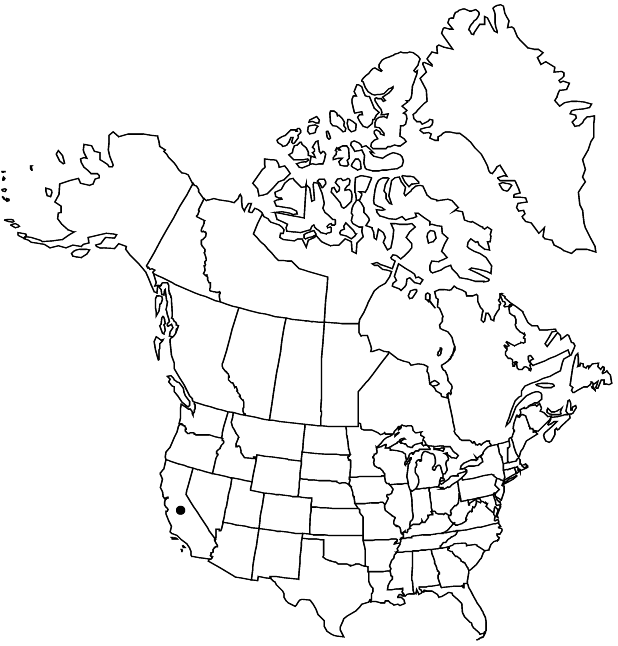Lithophragma trifoliatum
Bull. Torrey Bot. Club 32: 200. 1905 (as trifoliata),.
Plants slender. Flowering-stems simple, 20–50 cm. Leaves in basal rosette and cauline, basal digitately 3-lobed, segments again lobed, cauline (2–3), 3-foliolate or deeply lobed, reduced, similar to basal (except lobes longer); stipules large, decurrent on petiole base; petiole to 11 cm; blade dark green or reddish green, orbiculate, (base hastate), surfaces densely hairy. Inflorescences usually 1, (lax), nodding, 4–8-flowered racemes, simple. Pedicels not exceeding length of hypanthium. Flowers deciduous if unfertilized, fragrant, horizontal; hypanthium elongate-obconic, elongating in fruit, abruptly expanding, open at throat, (9–11 mm, length 3–4 times diam.); sepals erect, triangular; petals widely spreading, pink, obovate-rhombic, narrowly clawed, 3-lobed, 4–14 mm, ultimate margins entire; ovary 1/2+ to ± entirely inferior; styles included in fruit; stigma papillae in narrow subapical band. Seeds 0.6–0.7 mm, smooth or wrinkled. 2n = 28.
Phenology: Flowering Mar–May.
Habitat: Exposed runnels or near small streams, oak-coniferous woodland
Elevation: 40-700 m
Discussion
Lithophragma trifoliatum is known from the western slope of the Cascade Range and Sierra Nevada in California. It is closely related to L. parviflorum and was considered a variety by P. E. Elvander (1993). The shape of the hypanthium, the fragrant flowers, the relatively large pink petals, and the relatively large seeds are distinctive. Lithophragma trifoliatum rarely produces seed; in cultivation, self-pollination was unsuccessful (R. L. Taylor 1965). It may represent a sterile derivative of L. parviflorum that now persists by vegetative reproduction.
Selected References
None.
Lower Taxa
"entire" is not a number.
